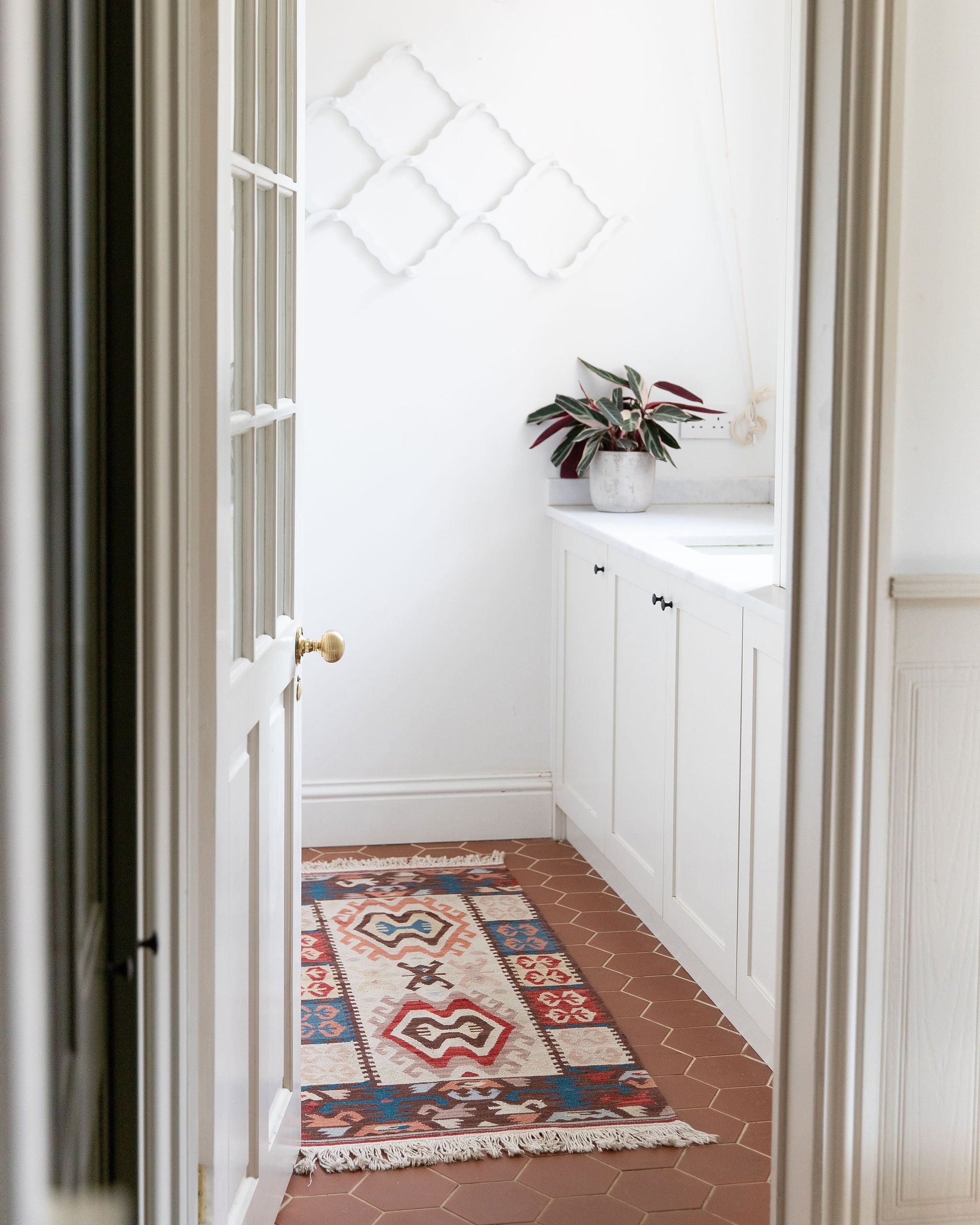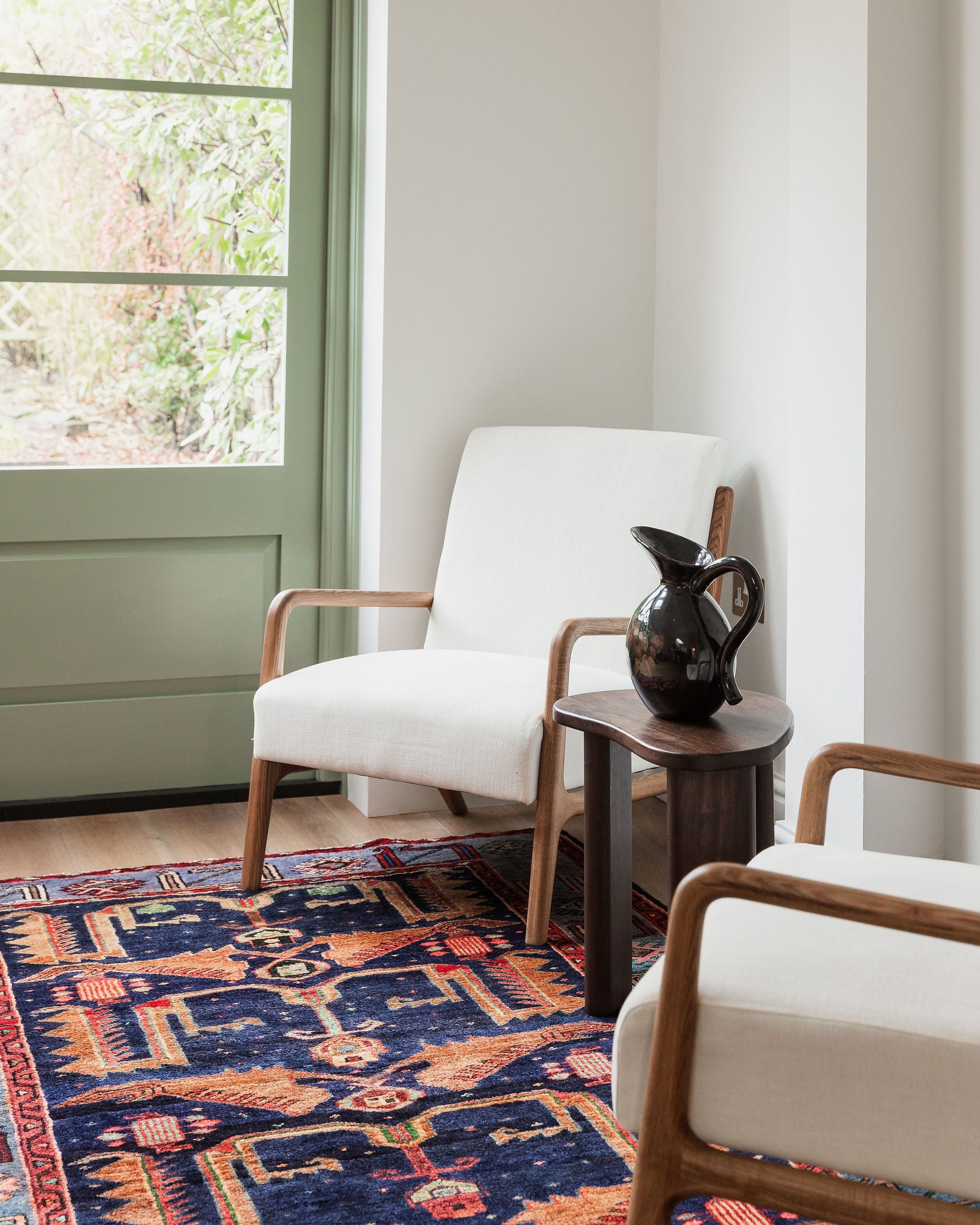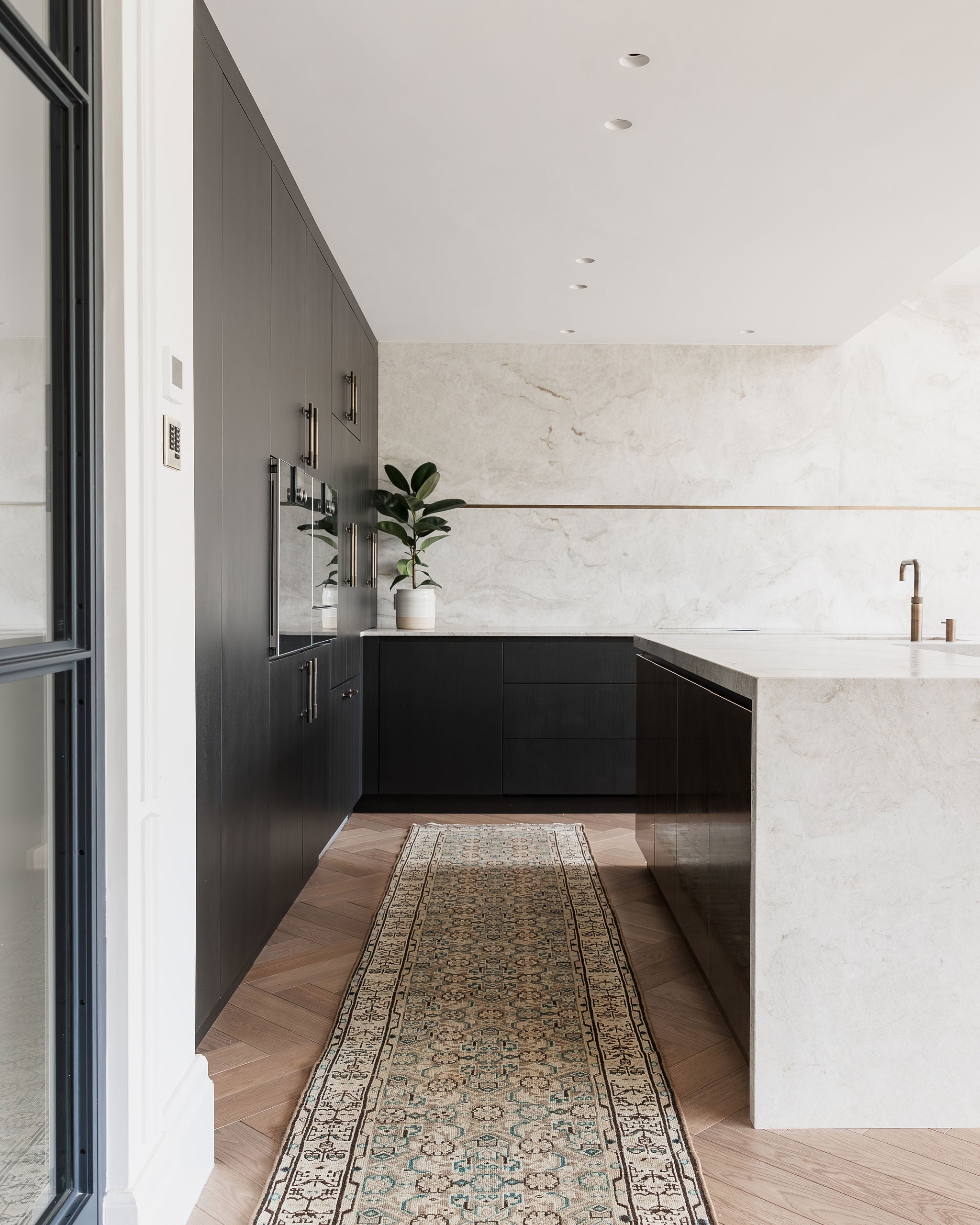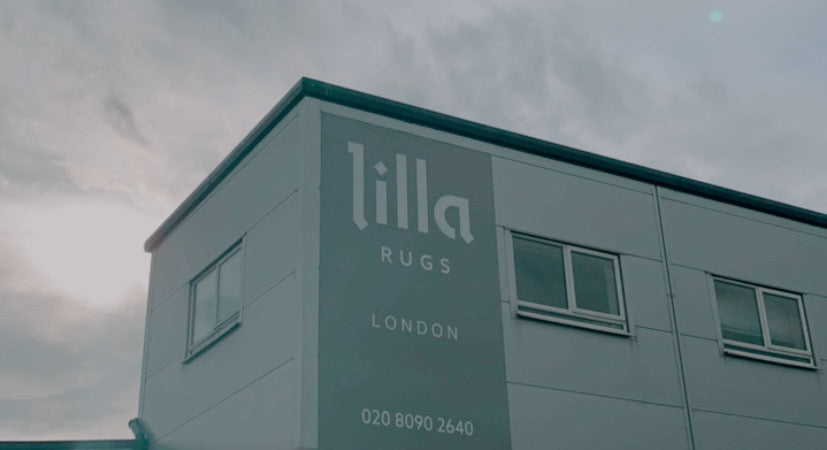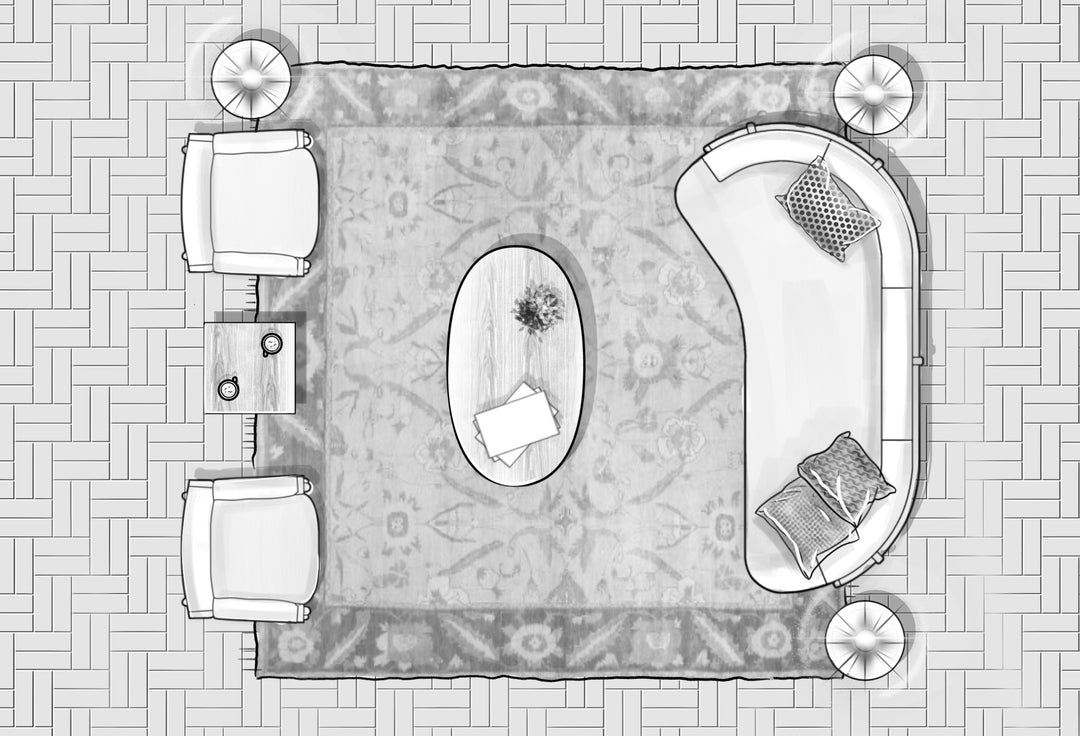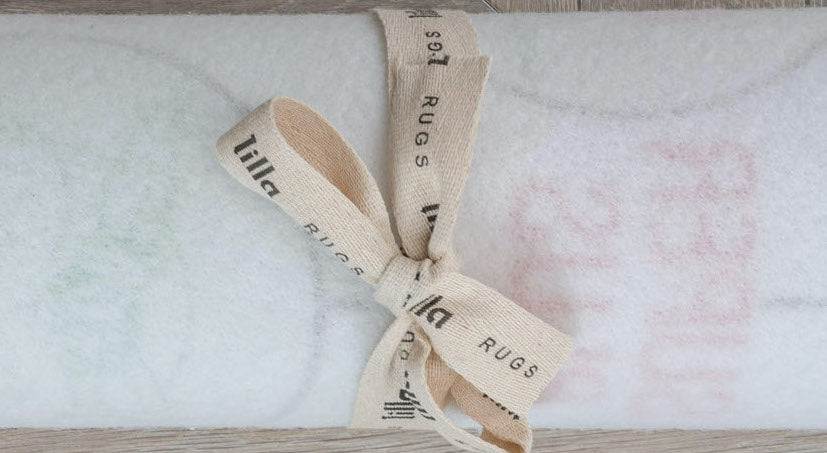How We Professionally Clean Handmade Rugs: Step by Step
Persian rugs are prized for their beauty, craftsmanship, and durability, but they require careful maintenance to preserve their value and appearance. While day-to-day cleaning will be a huge help, we recommend getting your rug cleaned professionally every 3-5 years. Why? There will always be a small amount of dirt that gets into the foundation of the rug. If you let this build up for too long the dirt can start to go hard. If it goes hard and you decide to fold the rug up at some point, you can risk a break in the foundation.
Supplies We Use
- Vacuum cleaner (without a beater bar): To remove loose dirt and debris.
- Mild detergent or rug shampoo: Specifically formulated for delicate wool or silk fibres.
- Sometimes white vinegar: To help neutralise odours and brighten colours.
- Soft-bristle brush: Gentle enough to avoid damaging the fibres.
- Buckets of cold water: For rinsing.
- Clean, white cotton towels: For blotting excess moisture.
- A squeegee: To remove excess water after cleaning.
Step 1: Consultation
Before going ahead and cleaning your rug, it would need to be assessed to ensure there isn't rotting or too much damage to repair. The level of clean needed (also dependent on the size and quality of the rug), as well as the repair of any damages, would need to be costed up first. To get a rough quote, you could send in imagery, but for a final quote, the rug would need to be sent or brought in.

Step 2: The process begins with the removal of dust and dirt build up
No matter how clean you keep your rug, with years of use there will be a level of dust and dirt that settles into the rug foundations. The dust and dirt will need to be beaten out of the rug, always by hand. Then it will go through a thorough vacuuming of both sides of the rug. We always use a vaccum without the beater bar to avoid damaging the fibres. Vacuuming removes loose dirt, dust, and debris that can wear down the fibre's over time.
Step 3: Test for Colorfastness
Before applying any cleaning solution, we test a small, inconspicuous area of the rug to ensure the colours won’t bleed. We mix a small amount of the cleaning solution with cold water and dab it on the test spot using a white cloth. Let it sit for a few minutes, then blot it dry. If the colours don’t transfer onto the cloth, the rug is safe to clean.
Step 4: Removal of stains or marks
If there are any stains or marks on your rug, which is likely, these will be treated. If a stain is too severe (think red wine on a cream rug!) there is no guarantee it will be completely removed. If the stain is really bad, do get it into someone as quickly as possible. The longer you leave it, the harder it will be to remove.
Step 5: The WASH
We mix a small amount of rug shampoo with cold water in a bucket. Sometimes, we use a mixture of one part white vinegar to three parts water, which helps to brighten the colours and remove odours. Laying the rug flat on a clean surface, we dip the soft-bristle brush into the cleaning solution, then gently scrub the rug in the direction of the pile (the direction in which the fibres naturally lay).

Step 6: Rinse the Rug
After cleaning each section, we rinse it with clean, with cold water to remove any soap residue. We usually use a bucket.
Step 7: Remove Excess Water
We use a squeegee to gently press out as much water as possible, always working in the direction of the pile. Here is it important to be cautious not to stretch or pull the rug, as this can distort its shape.
Step 8: Blot and Hang to Dry
We will often blot the rug with clean, white cotton towels to absorb excess moisture. After blotting, the rug is hung outside to dry naturally. The speed of this part of the process can vary dependent on weather, but it is important it dries naturally.

Step 9: Brush the Pile
Once the rug is almost dry, we sometimes use a soft brush to gently lift the pile and restore its original texture. This step is particularly important for rugs with a high pile or intricate designs.
Step 10: Final Vacuum
After the rug is completely dry, we give it one final vacuum (without the beater bar) to remove any remaining dirt or fibers that may have loosened during the cleaning process.
Cleaning a Persian rug by hand requires patience and care, but the results are well worth the effort. Regular professional cleaning will keep your rug looking vibrant and ensure that it remains a treasured part of your home for generations. Remember, for significant stains or deeply embedded dirt, it’s always best to consult a professional rug cleaner to avoid damaging your valuable investment.
Do get in touch at info@lillarugs.com if you're interested in getting your rug cleaned.


